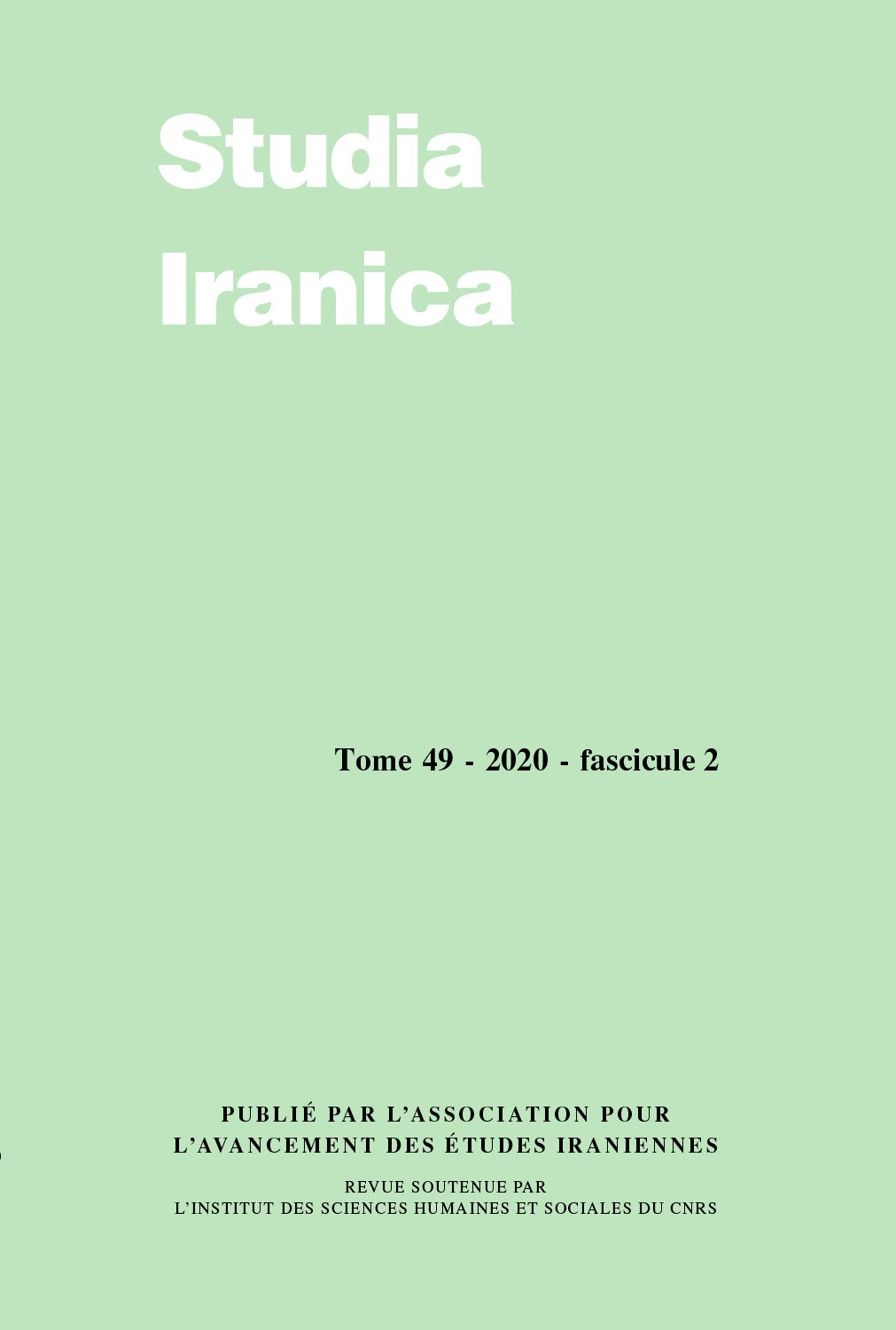next article in this issue  |

Preview first page |
Document Details : Title: Kerdīr's bun-xānag and Funding Foundations in Sasanian Iran Author(s): RAMBLE, Olivia Journal: Studia Iranica Volume: 51 Issue: 2 Date: 2022 Pages: 163-203 DOI: 10.2143/SI.51.2.3292442 Abstract : The exact meaning of the expression bun-xānag, appearing once in each of Kerdīr’s inscriptions at Naqš-e Rostam (KKZ§3; KNRm§7), has been a matter of debate since Henning’s first study of the compound in 1957. In the many works dedicated to this much-discussed term, an important aspect of the direct context of Kerdīr’s Naqš-e Rostam inscriptions has so far been neglected: the Fires and foundations for the soul (pad ruwān) established at this site by king Šābuhr I (r. 240-270 CE) in an inscription engraved right above the high priest’s own on the Ka‘ba of Zoroaster. This article proposes to shed new light on Kerdīr’s elusive bun-xānag by considering the high priest’s inscriptions within the ritual and economic context of Šābuhr I’s pad ruwān foundations. It will offer an opportunity to outline the structural role of pious foundations within the broader framework of the Sasanian economy as well as the key role of priests in administering them. L’interprétation de l’expression bun-xānag, qui apparaît dans chacune des deux inscriptions du mage Kerdīr à Naqš-e Rostam (KKZ§3; KNRm§7), reste l’objet de débats depuis que Henning en a fait une première analyse en 1957. Or, les nombreuses études consacrées à ce terme ont laissé dans l’ombre un aspect important du contexte de ces deux inscriptions: les feux et fondations pour l’âme (pad ruwān) établis par le roi Šābuhr I (r. 240-270 de n. è.) dans une inscription gravée juste au-dessus de celle du mage sur la Ka’ba de Zoroastre. Cet article se propose de jeter un nouvel éclairage sur le bun-xānag de Kerdīr en soulignant l’importance structurelle des fondations pieuses au sein de l’économie sassanide ainsi que le rôle clé des prêtres dans leur administration. |
|


